Showing Spotlights 17 - 24 of 161 in category All (newest first):
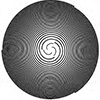 New ultra-thin graphene metalenses can focus light into exotic shapes like spirals and doughnuts. This enables advances in areas like optical trapping, microscopy, quantum optics and communications.
New ultra-thin graphene metalenses can focus light into exotic shapes like spirals and doughnuts. This enables advances in areas like optical trapping, microscopy, quantum optics and communications.
Oct 12th, 2023
 Discover the nanoscale science behind nature's vivid structural colors. This article unravels how nanostructures like photonic crystals manipulate light without pigments to generate colors in organisms. Learn how researchers apply these bioinspired designs to develop advanced optical technologies.
Discover the nanoscale science behind nature's vivid structural colors. This article unravels how nanostructures like photonic crystals manipulate light without pigments to generate colors in organisms. Learn how researchers apply these bioinspired designs to develop advanced optical technologies.
Aug 8th, 2023
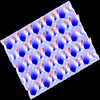 Researchers report a breakthrough in light manipulation with hyperbolic polaritonic crystals by using anisotropic 2D materials to control light at subwavelength scales, paving the way for advancements in imaging, optical communication, and more.
Researchers report a breakthrough in light manipulation with hyperbolic polaritonic crystals by using anisotropic 2D materials to control light at subwavelength scales, paving the way for advancements in imaging, optical communication, and more.
Jul 21st, 2023
 As AI and nanophotonics have distinct backgrounds, there is often a knowledge gap for those interested in this interdisciplinary area. A new book, the first of its kind, aims to introduce the fundamentals of both nanophotonics and machine learning, specifically deep learning, and to help readers understand how these fields can enhance each other.
As AI and nanophotonics have distinct backgrounds, there is often a knowledge gap for those interested in this interdisciplinary area. A new book, the first of its kind, aims to introduce the fundamentals of both nanophotonics and machine learning, specifically deep learning, and to help readers understand how these fields can enhance each other.
Mar 30th, 2023
 Researchers demonstrate a new way to create chiral nanostructures using a laser beam. By carefully controlling the direction of the laser beam's vibrations, the researchers created a variety of chiral structures made of platinum oxide in unique shapes, like twisted micropillars and spiral superstructures.
Researchers demonstrate a new way to create chiral nanostructures using a laser beam. By carefully controlling the direction of the laser beam's vibrations, the researchers created a variety of chiral structures made of platinum oxide in unique shapes, like twisted micropillars and spiral superstructures.
Mar 22nd, 2023
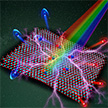 Near-infrared photodetectors play a significant role in many aspects of research and daily life and twisted-angle-induced unusual electrical and optical properties in van der Waals homostructures have received extraordinary attention recently. However, these emerging properties have rarely been applied to optoelectronic devices. Here, researchers demonstrate broadband photoresponse capable of overcoming the band-gap limitation of semiconductors in the twisted lead iodide homostructures.
Near-infrared photodetectors play a significant role in many aspects of research and daily life and twisted-angle-induced unusual electrical and optical properties in van der Waals homostructures have received extraordinary attention recently. However, these emerging properties have rarely been applied to optoelectronic devices. Here, researchers demonstrate broadband photoresponse capable of overcoming the band-gap limitation of semiconductors in the twisted lead iodide homostructures.
Oct 26th, 2022
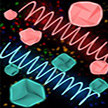 Artificially engineered chiral materials with exceptional light-manipulating capabilities show significantly enhanced chiroptical response and capability of light manipulation, which have emerged as a promising chiral platform for applications in biosensing, catalysis, and photonics. Scientists now report a novel class of chiral materials called bichiral nanoparticles that can easily tune the sign of circular dichroism through the hybridization of bichiral centers without inverting the geometric chirality.
Artificially engineered chiral materials with exceptional light-manipulating capabilities show significantly enhanced chiroptical response and capability of light manipulation, which have emerged as a promising chiral platform for applications in biosensing, catalysis, and photonics. Scientists now report a novel class of chiral materials called bichiral nanoparticles that can easily tune the sign of circular dichroism through the hybridization of bichiral centers without inverting the geometric chirality.
Oct 18th, 2022
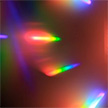 In an effort to reduce the size of optical spectrometers, researchers have been working on developing miniature on-chip spectrometers that could be integrated into small handheld devices or even smartphones. Now, reducing the size down to the micrometer scale, researchers have developed a single-dot spectrometer based on an in situ modulated perovskite photodetector. The device is enabled by photogain manipulation controlled by ion redistribution in the perovskite film under an externally applied bias. This unique spectrometer design breaks the footprint-resolution restriction of spectrum analysis and leads to a new design direction of perovskite in situ modulation for the development of new functional devices.
In an effort to reduce the size of optical spectrometers, researchers have been working on developing miniature on-chip spectrometers that could be integrated into small handheld devices or even smartphones. Now, reducing the size down to the micrometer scale, researchers have developed a single-dot spectrometer based on an in situ modulated perovskite photodetector. The device is enabled by photogain manipulation controlled by ion redistribution in the perovskite film under an externally applied bias. This unique spectrometer design breaks the footprint-resolution restriction of spectrum analysis and leads to a new design direction of perovskite in situ modulation for the development of new functional devices.
Oct 13th, 2022
 New ultra-thin graphene metalenses can focus light into exotic shapes like spirals and doughnuts. This enables advances in areas like optical trapping, microscopy, quantum optics and communications.
New ultra-thin graphene metalenses can focus light into exotic shapes like spirals and doughnuts. This enables advances in areas like optical trapping, microscopy, quantum optics and communications.
 Subscribe to our Nanotechnology Spotlight feed
Subscribe to our Nanotechnology Spotlight feed





